Abstract
Health selection, which transfers workers with health problems from physically heavy to physically light occupations, may be a factor contributing to excessive morbidity in the latter group. The aim of this study was to investigate whether workers who had stopped doing heavy work and moved to occupations with low physical demand are generally more ill than workers who had always done light work. The study population comprised 5436 men and 5486 women aged 25 to 74 years, who were interviewed within the scope of the Statistics Sweden Survey of Living Conditions in the years 1977 and 1979-81. For all respondents detailed recording of the occupational histories was completed. For all the diseases and functional disorders studied an increase in risk could be seen for movers. Moreover, movers who had left their heavy work most recently had the greatest risks. This association was most apparent when studying musculoskeletal disorders and impaired working capacity for men and diseases of the circulatory organs and impaired hearing for women. The findings indicate clearly that there is a negative health selection into physically light occupations, introducing a bias (especially in cross-sectional studies) that causes an apparent excess morbidity in occupations with low physical demand.
Full text
PDF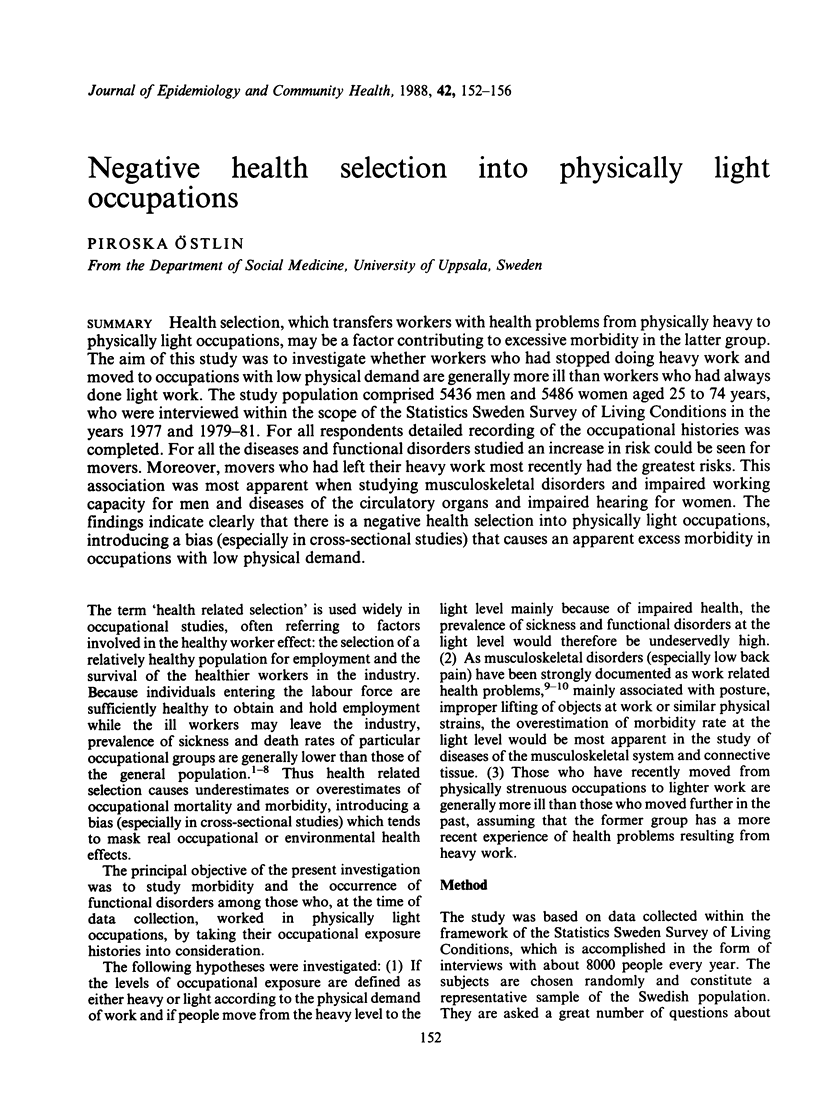
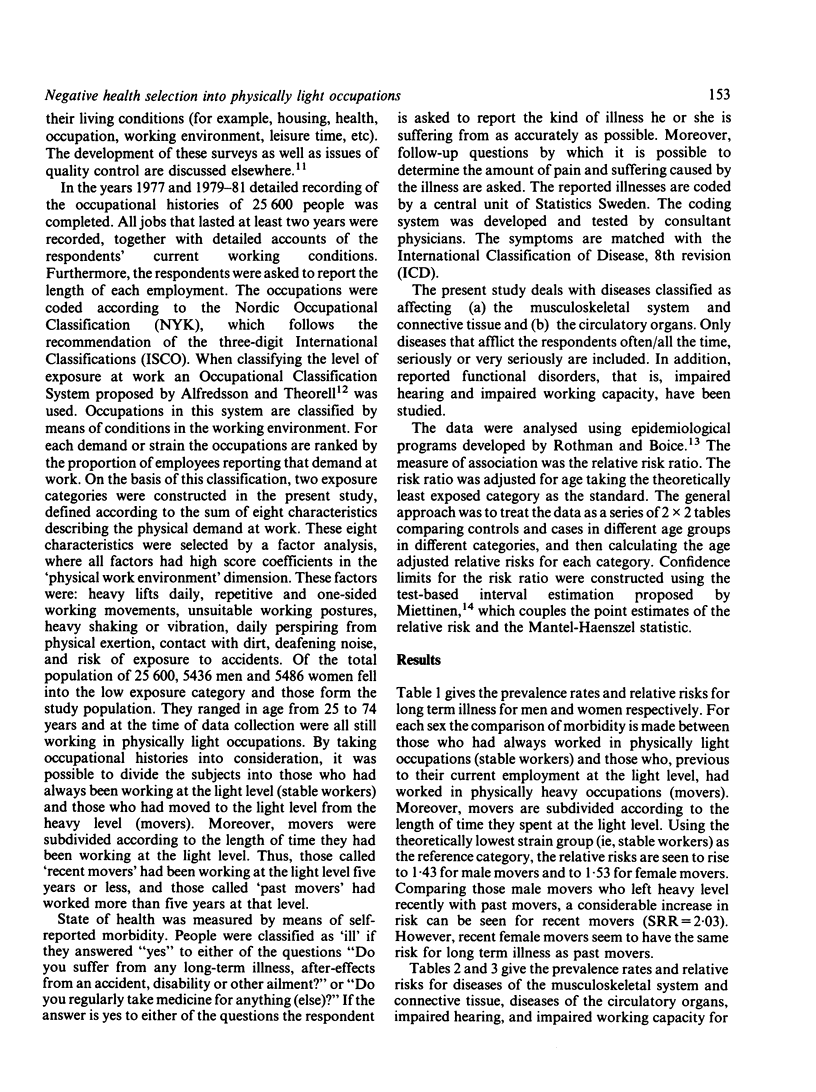
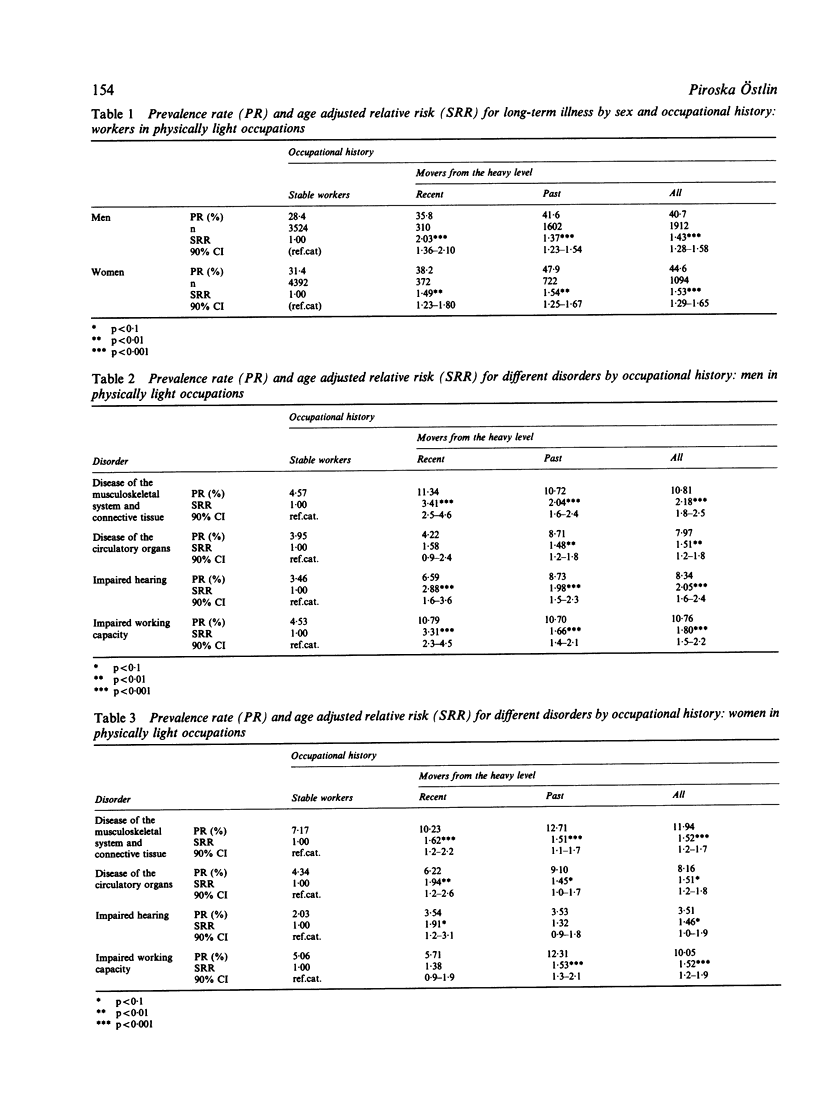
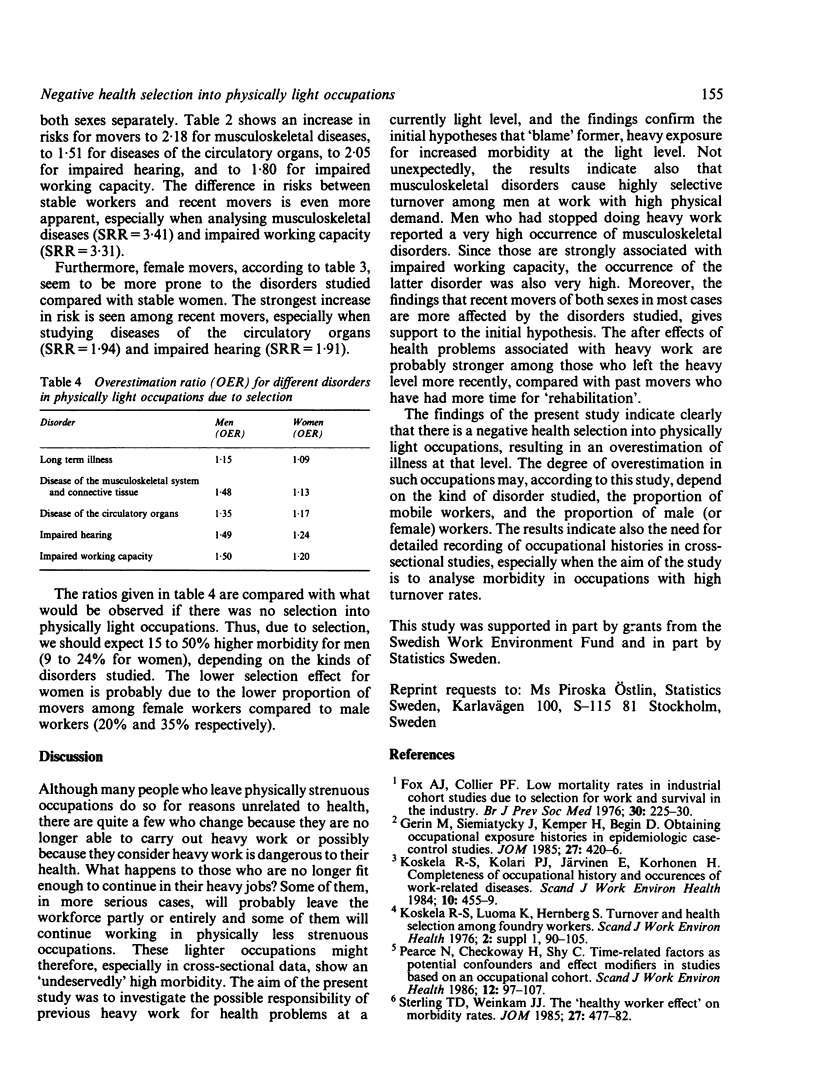
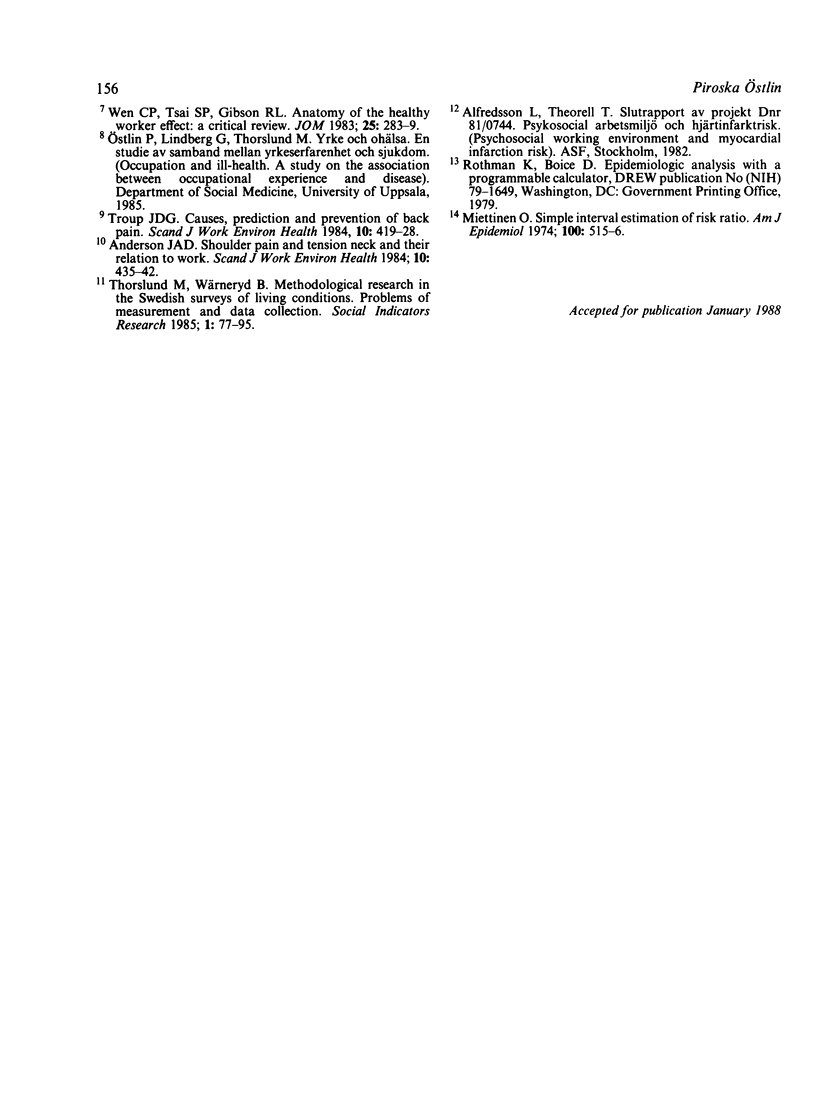
Selected References
These references are in PubMed. This may not be the complete list of references from this article.
- Anderson J. A. Shoulder pain and tension neck and their relation to work. Scand J Work Environ Health. 1984 Dec;10(6 Spec No):435–442. doi: 10.5271/sjweh.2300. [DOI] [PubMed] [Google Scholar]
- Fox A. J., Collier P. F. Low mortality rates in industrial cohort studies due to selection for work and survival in the industry. Br J Prev Soc Med. 1976 Dec;30(4):225–230. doi: 10.1136/jech.30.4.225. [DOI] [PMC free article] [PubMed] [Google Scholar]
- Gérin M., Siemiatycki J., Kemper H., Bégin D. Obtaining occupational exposure histories in epidemiologic case-control studies. J Occup Med. 1985 Jun;27(6):420–426. [PubMed] [Google Scholar]
- Koskela R. S., Kolari P. J., Järvinen E., Korhonen H. Completeness of occupational history and occurrences of work-related diseases. Scand J Work Environ Health. 1984 Dec;10(6 Spec No):455–459. doi: 10.5271/sjweh.2298. [DOI] [PubMed] [Google Scholar]
- Koskela R. S., Luoma K., Hernberg S. Turnover and health selection among foundry workers. Scand J Work Environ Health. 1976;2 (Suppl 1):90–105. doi: 10.5271/sjweh.2828. [DOI] [PubMed] [Google Scholar]
- Pearce N., Checkoway H., Shy C. Time-related factors as potential confounders and effect modifiers in studies based on an occupational cohort. Scand J Work Environ Health. 1986 Apr;12(2):97–107. doi: 10.5271/sjweh.2161. [DOI] [PubMed] [Google Scholar]
- Sterling T. D., Weinkam J. J. The 'healthy worker effect' on morbidity rates. J Occup Med. 1985 Jul;27(7):477–482. [PubMed] [Google Scholar]
- Troup J. D. Causes, prediction and prevention of back pain at work. Scand J Work Environ Health. 1984 Dec;10(6 Spec No):419–428. doi: 10.5271/sjweh.2318. [DOI] [PubMed] [Google Scholar]
- Wen C. P., Tsai S. P., Gibson R. L. Anatomy of the healthy worker effect: a critical review. J Occup Med. 1983 Apr;25(4):283–289. [PubMed] [Google Scholar]


